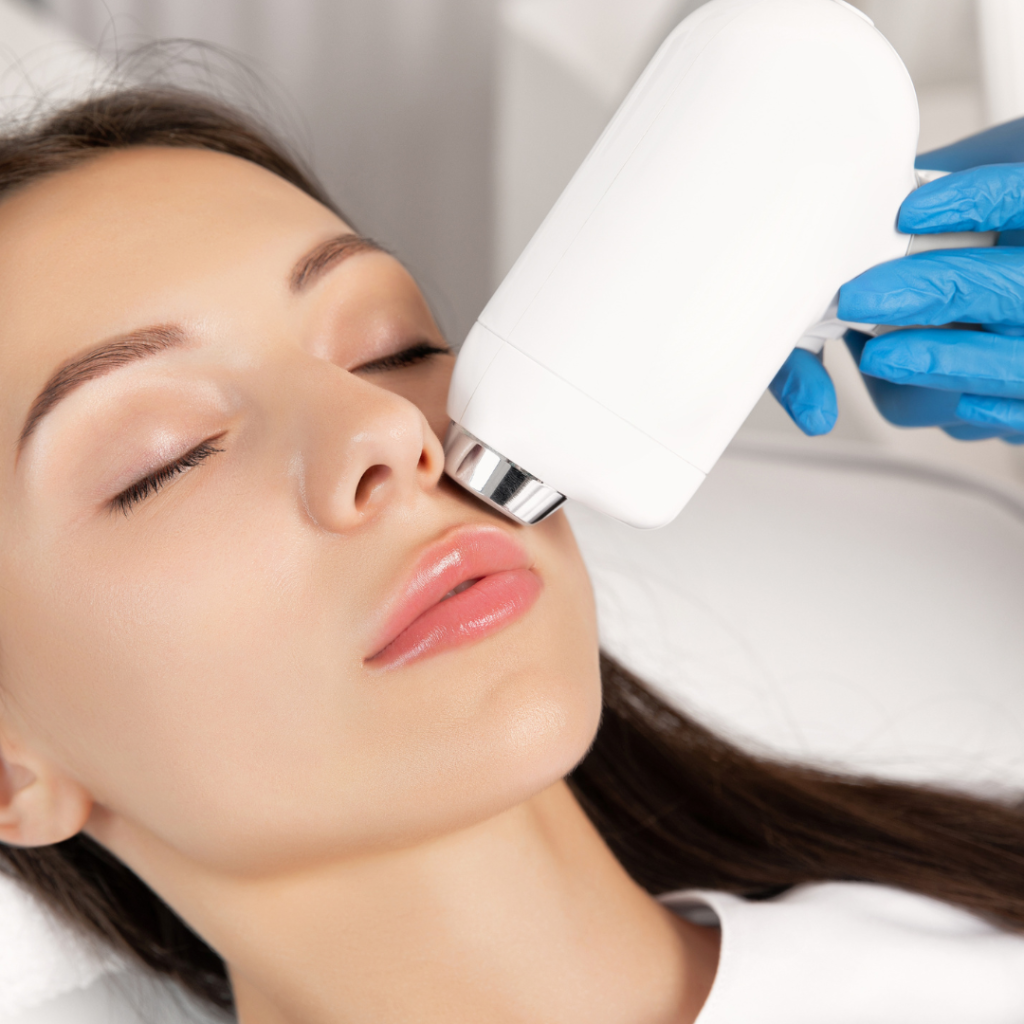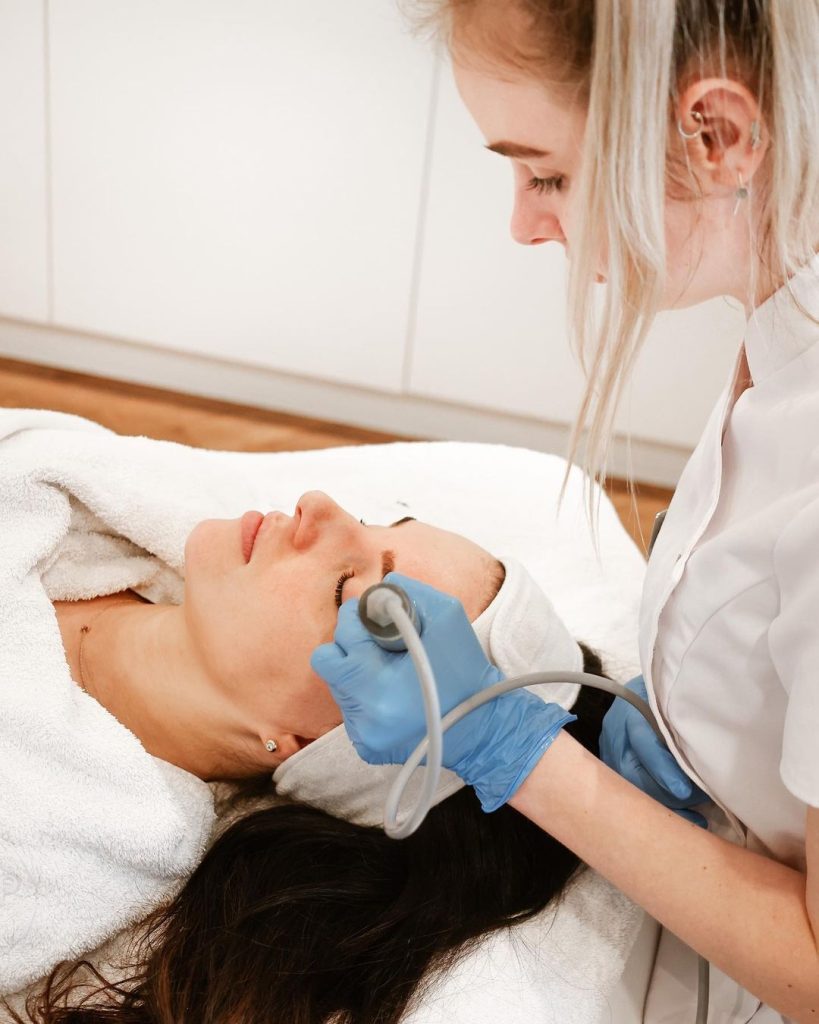Recently, we heard that laser treatments could potentially be harmful to our skin in the long run. Understandably, we were alarmed since we stan our beloved Morpheus 8, Moxie, and Pico Genesis. We ran to the professionals, celebrity skin expert, beauty entrepreneur, and founder of Bloy Institute, Lindsay van der Looij as well as dermatologist, anti-aging specialist, and founder of Lucia Clinic, Dr. Radmila Lukian, of the Lucia Clinic to get their opinions.

To get a lil more specific, what we heard was that laser treatments can cause the telomeres to prematurely shorten. Given that we are embarking on a huge learning curve here, we needed to find out first wth telomeres are and why they’re so important.
Cosmo ME: What telomeres are and how do they impact and/or influence the aging process?
Dr. Lukian: Telomeres are essentially like the protective endcaps on your shoelaces that keep them from unravelling. They consist of DNA and proteins that sit on the ends of our chromosomes and help prevent our genetic material from damage.
Ms. van der Looij: These protective endcaps play a role in how our skin ages. As we age, our cells divide over and over again. This process in the body is needed for our bodies to repair tissue and to grow, but it also causes our telemores to shorten.
Shorter telomeres can be linked to a number of health concerns, such as heart disease and cancer. Several factors contribute to why telemores shorten, including but not limited to oxidative stress, inflammation, genetics, lifestyle habits, stress and aging. Telomere shortening is a natural process which occurs as we age.
Dr. Lukian: Additionally, poor diet, and lack of physical activity have all been linked to telomere shortening, whereas healthy habits like exercise and a nutritious diet may help to preserve telomere length and potentially slow the aging process.

via Instagram @bloyinstitute
Cosmo ME: What happens to telomeres when we get laser treatments?
Dr. Lukian: When undergoing facial laser treatments, the heat from the laser beam is absorbed by the water in our skin cells. This can cause some damage to our skin cells, including to the DNA inside them. However, studies on the effects of laser treatments on telomeres are limited, but it is believed that there could be some shortening of telomeres due to the DNA damage caused by the laser.
It is important to note, though, that the body has mechanisms in place to repair damaged DNA, and so any shortening of telomeres would likely be temporary and reversed over time. Additionally, the benefits of facial laser treatments in improving skin appearance and reducing wrinkles generally outweigh any minor effects on telomeres.
Tailor-made treatments are important for telomeres because telomere length can vary between individuals based on various factors such as genetics, age, lifestyle, and environmental exposures. Therefore, a one-size-fits-all approach may not effectively protect or repair telomeres in all individuals.
Cosmo ME: Should we not get laser treatments if they shorten our telomeres?
Ms. van der Looij: I believe in moderate use, every now and then a laser treatment can be beneficial if this is done by a reputable expert who knows exactly what your skin needs and can handle. I myself use a combination of products from my own skincare brand Labareau and oxygen facials to stimulate fresh-looking, clean, nourished, glowing skin.
Cosmo ME: How many times a year can we get laser treatments?
Dr. Lukian: The number of facial laser treatments you can have per year depends on various factors such as the specific type of laser treatment, your skin type and condition, and your overall health. Generally, it is recommended to limit your laser treatments to no more than four to six per year, with at least four to six weeks between each treatment to allow your skin enough time to heal.
Cosmo ME: Are they any laser treatments we should avoid?
Ms. van der Looij: Stay away from new lasers that have only just recently been introduced on the market. I myself only work with lasers that have been around for years, which have proven results, are safe to use, and have a lot of research and scientific innovation backing them. Avoid aggressive lasers such as the CO2 laser, which removes the upper layers of the skin in its entirety and has a high risk of infection and scarring.

via Instagram @bloyinstitute
Cosmo ME: Are there any laser treatments that do not negatively impact our telomeres?
Ms. van der Looij: Non-ablative lasers are a gentler option. This is due to the fact that they direct their energy into the deeper tissue and cause damage there, so they do not damage the surface of the skin. However, the results take more time to be seen. If I was to recommend a laser treatment it would be this one, as it doesn’t damage the skin barrier.
Dr. Lukian: There is limited research on the effects of different laser treatments on telomeres, and more studies are needed to understand the relationship between lasers and telomere health fully. However, some non-ablative lasers have been shown to be less damaging to the skin and may have potential benefits for telomere health.
For example, low-level laser therapy (LLLT), also known as cold laser therapy, uses low levels of light to stimulate cellular activity and promote healing. LLLT has been shown to have antioxidant and anti-inflammatory effects, which may indirectly support telomere health by reducing oxidative stress and inflammation.
Other non-ablative lasers, such as pulsed dye lasers and Nd:YAG lasers, work by heating the deeper layers of the skin to stimulate collagen production and promote skin tightening, without damaging the surface of the skin. These lasers have been shown to be effective for improving the appearance of skin without causing significant damage or accelerating telomere shortening.
Cosmo ME: Is there a way to tell if our telomeres are already too short?
Dr Lukian: Yes, there are tests available to measure the length of our telomeres. One common test is called the telomere length assay, which measures the length of the telomeres in white blood cells. This test can give an indication of overall telomere length and therefore potential cellular aging or risk of disease. However, it is important to note that telomere length can vary greatly between individuals and can be affected by a variety of factors, such as genetics, lifestyle, and environment.
Cosmo ME: Is there anything else you’d like to add?
Dr Lukian: Telomeres play a crucial role in maintaining cellular health and protecting against aging and age-related diseases. If you are concerned about telomere health and aging, we recommend consulting with a dermatologist or skin doctor to discuss a personalized plan for maintaining overall skin health and wellbeing. At Lucia Aesthetic & Dermatology Center, we are committed to providing personalized treatment options to help you achieve your goals. Our clinic offers a range of non-surgical and surgical procedures for all ages, ethnicities, and skin types.
Ms. van der Looij: For my skin, I use a combination of products from my own skincare brand, Labareau, and oxygen facials to stimulate fresh-looking, clean, nourished, glowing skin. The treatments I do recommend are PRP and oxygen facials. A PRP treatment uses a patient’s own blood cells to accelerate healing in a specific area, which is a great skin rejuvenation technique.

via Instagram @labareau
An oxygen facial works by delivering oxygen to your skin cells and boosts collagen production. Oxygen also has anti-inflammatory properties, which can help to reduce the appearance of acne and other blemishes. I also believe in protecting your skin not only by using quality skincare, but by living a healthy lifestyle, taking the right supplements, and eating whole foods. Healthy, glowing skin starts from the inside out.

